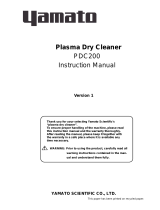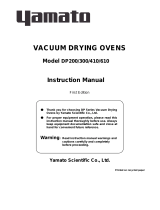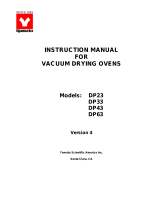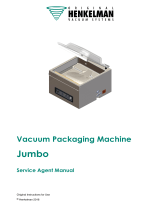
Contents
1. Safety precautions...............................................................1
DESCRIPTION OF WARNING SYMBOLS ..........................................................................1
A LIST OF SYMBOLS....................................................................................................2
WARNING AND CAUTION..............................................................................................3
2. Before operating the unit ....................................................4
PRECAUTIONS FOR INSTALLATION ................................................................................4
3. MAIN APPLICATIONS...........................................................5
APPLICATIONS............................................................................................................5
4. COMPONENTS AND FUNCTIONS.......................................6
MAIN UNIT .................................................................................................................6
BACK OF THE MAIN UNIT .............................................................................................7
5. INSTALLATION METHOD.....................................................8
REQUIRED EQUIPMENT / METHODS TO CONNECT CABLES AND TUBES ............................8
6. INSTALLING ELECTRODES ................................................9
LIST OF ELECTRODE RELATED ACCESSORIES.................................................................9
INTERNAL STRUCTURE AND OF THE CHAMBER AND PARTS NAMES..................................10
WHEN ONE-STAGE ELECTRODE IS USED......................................................................11
WHEN 2-STAGE ELECTRODE IS USED(INSTALLATION OF ELECTRODES) ......................12
WHEN 2-STAGE ELECTRODE IS USED(RIE MODE)....................................................13
WHEN 2-STAGE ELECTRODE IS USED(DP MODE).....................................................14
WHEN 3-STAGE ELECTRODE IS USED(INSTALLATION OF ELECTRODES) ......................15
WHEN 3-STAGE ELECTRODE IS USED(RIE MODE)....................................................16
WHEN 3-STAGE ELECTRODE IS USED(DP MODE).....................................................17
7. RUNNING PROCEDURE ....................................................18
OPERATION IN AUTO RUN..........................................................................................18
RUNNING PROCEDURE..............................................................................................19
TOUCH PANEL OPERATIONS ......................................................................................22
8. PRECAUTIONS FOR HANDLING ......................................30
WARNING AND CAUTION..................................................................................30
9. MAINTENANCE...................................................................31
DAILY INSPECTION ....................................................................................................31
PERIODIC INSPECTION...............................................................................................32
10. ALARMS AND CORRECTIVE ACTIONS..........................33
ALARMS AND CORRECTIVE ACTIONS ..........................................................................33
OPERATING PROCEDURES FOR AUTO TUNING ADJUSTING SWITCH...............................34
11. AFTER-SALE SERVICE AND WARRANTY......................35
REQUEST FOR REPAIR ..............................................................................................35






























